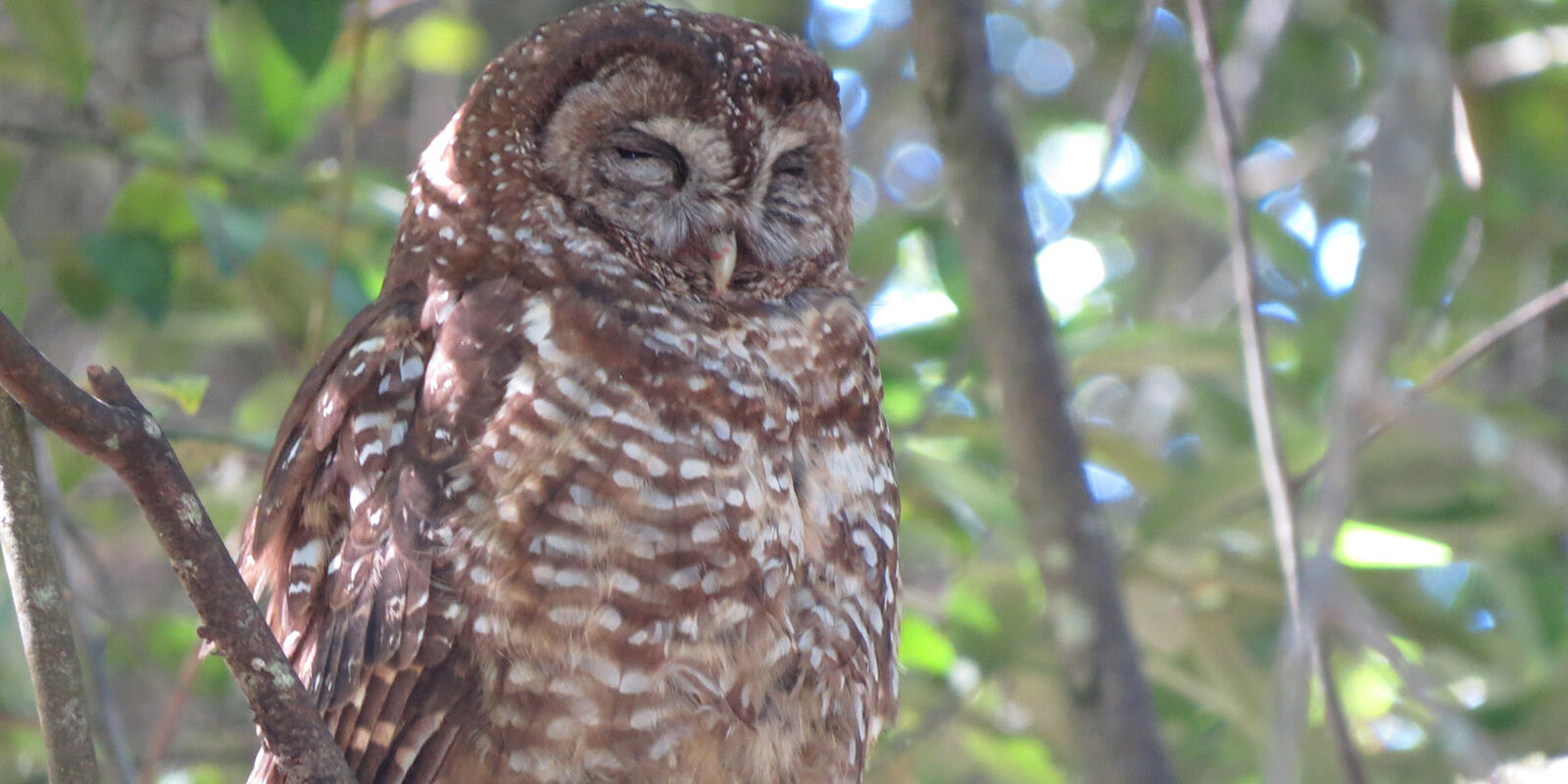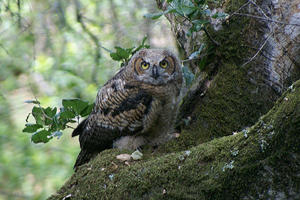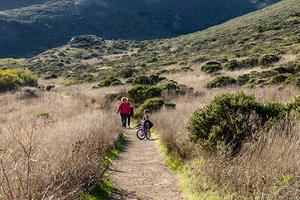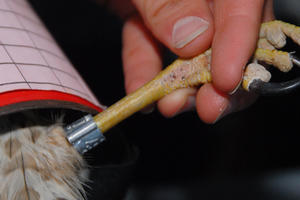

Marin County is a great place to be a Northern Spotted Owl. At least, that’s what we can imply from the data. Spotted Owls have been monitored in Marin since 1999, in areas including the Golden Gate National Recreation Area, Muir Woods National Monument, and Point Reyes National Seashore. The federally threatened species is a key indicator of ecological health in forests. NPS monitors them to plan and evaluate conservation efforts, long-term trends, reproductive success, nesting habitats, and the forest ecosystem.
Northern Spotted Owls are key predators in the woods, helping to keep the balance of rodents and small animals. They live for 15 years and only start breeding between ages 2-5. They don’t reproduce every year, and when they do, they only have 1-2 chicks. The high canopies of native evergreen forests are their ideal habitat, so it's no wonder Marin is perfect for them. This is the southernmost habitat of Northern Spotted Owls.
One of the greatest threats to the Spotted Owl is the Barred Owl, a species native to the eastern United States whose range has expanded west and now competes with the already struggling Northern Spotted Owl. Barred Owls began breeding in Marin in 2007 and are larger and more aggressive than Spotted Owls.
As of 2023, NPS was monitoring 43 sites in Marin for Northern Spotted Owls. There can be pairs of nesting owls, single owls, or unoccupied nests. In 2023, Spotted Owls appeared in some previously unoccupied territories and, in an exciting development, no Barred Owls were detected in the monitoring area. The population of Spotted Owls in Marin is one of the last stable populations on the West Coast. That’s something to give a hoot about!



